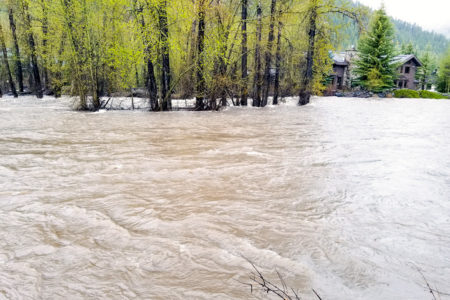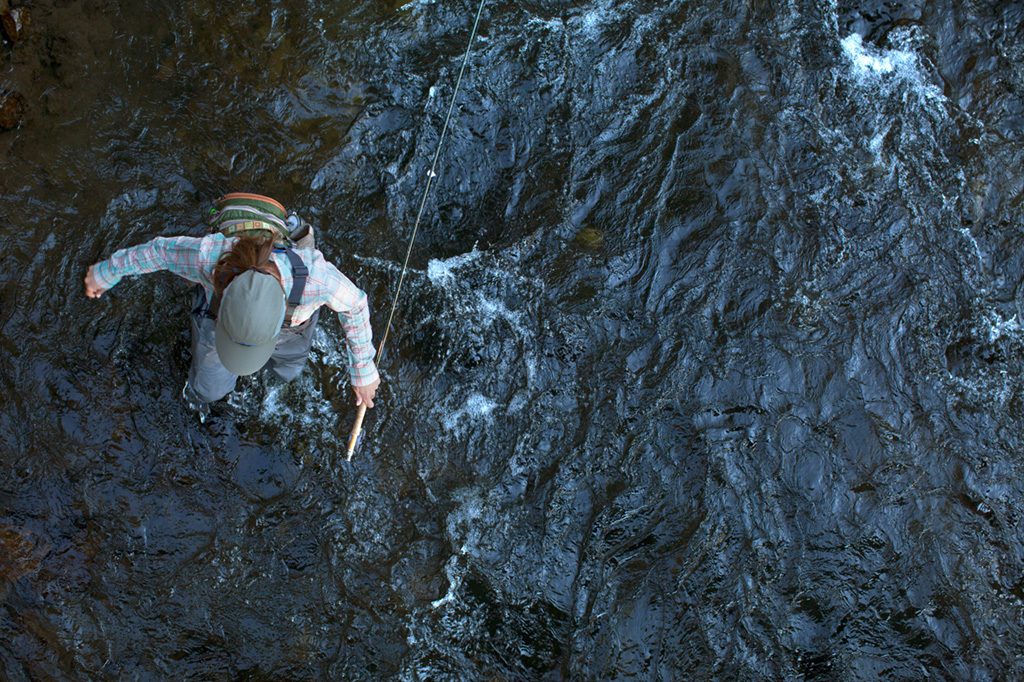The weather of Feb. 9 and 10, 2017, was dramatic even by big-winter standards of central Idaho’s Wood River Valley. Terribly high winds swirled counterclockwise as a massive low-pressure system dumped frozen precipitation on the mountainous landscape below. Roads became impassible, roofs sagged, and, in many cases, collapsed under the historic snow load. Bald Mountain was closed for two days due to poor skiing conditions and avalanche danger. Mother Nature was throwing a fit of epic proportions.
This was a common theme of the 2016-2017 winter across most of the Western United States. California saw snow totals and flooding unlike anything in recent memory. In juxtaposition to several below-average winter snow totals, the effects were magnified.
As residents and visitors beheld this environmental tantrum, many with shovels in hand or snow blowers revving, the Big Wood River flowed along the Valley floor as it had done for millennia, undisturbed by such a relatively minor event. Within its waters swam thousands of fish, mostly rainbow trout with a smattering of brown trout, which went about their business per usual, undisturbed.
Skooter Gardiner, a member of the Sun Valley Ski Patrol and its snow safety director in charge of weather forecasting, snowpack analysis and avalanche mitigation, was in the thick of it. “I had rarely seen the Bald Mountain snowpack so unstable and dangerous,” Gardiner said. “A profound amount of moisture had accumulated. It was an impressive sight to behold.”
Without question, last winter would come to be known as one of the most prolific on record. In fact, during the month of February, 119 inches of snowfall were recorded, ranking as only the second month since official records have been kept of 100 inches or more falling in a single month. The last time that happened was before Americans set foot on the moon.
On a sunny, breezy day, three and a half months after February’s violent winter weather event, the Idaho general fishing season opened as it always does on the fourth Saturday in May. The birds sang their springtime songs, elk calved in the wooded quiet of the Valley floors, and the Big Wood River raged.
As is often the case in years with a deep winter snowpack, the spring of 2017 featured a river high above its banks. The whitewater was more representative of higher flows in larger rivers.
Nevertheless, the resident trout were finning in whatever sanctuaries they could find as they waited for the raging river flows to ultimately subside. When the Big Wood approximated a fishable flow sometime in mid to late July, much of the river had fundamentally changed.
New side channels had been cut by the enormous river flows, and countless cottonwood trees—many more than a century old—had been ripped from the banks and deposited far downstream. Much of the Big Wood River had been completely redesigned by environmental forces.
“Perhaps abnormal is the new normal,” offered Gardiner as he evaluated the river in his summertime role as a fly-fishing guide for Ketchum’s Silver Creek Outfitters. “We’ve had large runoff years without a lot of change, and then we had this year. The effects of the runoff were truly impressive.”

Big Wood River in the spring of 2017. Photo by Steve Dondero
As a result of the massive flows, anglers have been presented with what in many places is effectively a brand-new river. New drop structures and eddies, new channels and a massive deposition of gravel and natural obstacles have resulted in a river reset and the opportunities and challenges that come with an altered riparian landscape.
For local fishermen who consider the Big Wood their home river, and for guests who travel from far and wide to fish the blue-ribbon trout stream, this has resulted in great opportunity. Though the river flows through the same valley that it has historically, its makeup and design is, in many stretches, utterly new.
“As a guide, I enjoy rediscovering my home waters after significant runoff,” Gardiner shared. “There is much to explore. New side channels, a redistribution of woody debris and gravel, and the newly developed runs, seams and eddies. And, ultimately, it seems to be very healthy for the fishery.”
Perhaps the only exception to this was during the spring of 2014 when the snowmelt carried countless tons of ash and particulate matter from surrounding hillsides as a result of the Beaver Creek Fire of the previous summer and fall, a blaze that consumed residences and approximately 115,000 acres of land surrounding Sun Valley. During the spring runoff, the Big Wood’s rushing waters ran black, suffocating thousands of fish and decimating the local entomology.
Regardless of that exception, anglers in 2017 have enjoyed excellent post-flood fishing. Areas to focus on include newly cut runs, pools and holding water, often demarcated by glassy water, bubble lines and the deeper greenish hues that accompany greater river depth.
Mother Nature, in all her glory, is inarguably fickle. As has been the case through history, weather and precipitation cycles will rise and fall, and every winter and spring will be unique to themselves, offering variations of change throughout the local freestone river systems. But the spring of 2017 will be remembered as exceptional for the fury with which the Big Wood River recreated itself through massive hydrological forces—forces that were set in motion by what visitors to Baldy during the previous winter would certainly describe as some of the best skiing Sun Valley has ever seen.


